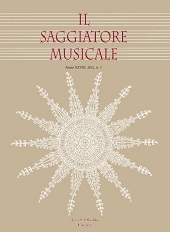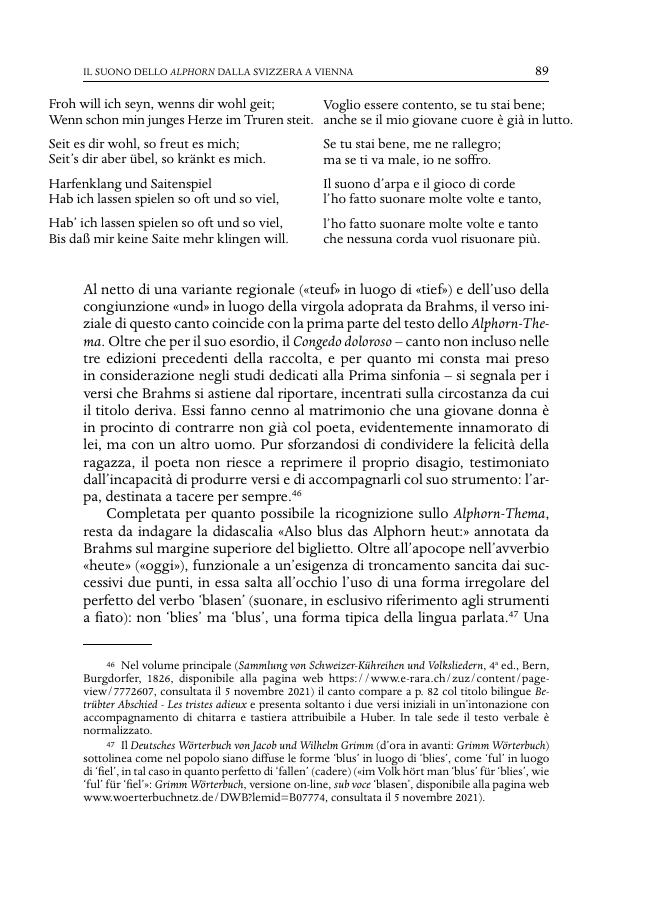Il suono dello Alphorn dalla Svizzera a Vienna. Brahms, un avverbio e varie donne
P. 69-111
The article investigates some of the literary and musical works that may be hidden behind the famous alphorn theme used by Brahms in the last movement of his First Symphony (1876).Starting from the texts introducing and underlying the tune notated on the small portion of staff paper that Brahms sent to Clara Wieck Schumann from the Bernese Oberland on 12 September 1868, the article deals with the occurrence of syntagms and music cells displayed in Brahms' greeting card in works such as Eichendorff's Aus dem Leben eines Taugenichts (1826), a folk song included in a Swiss collection published in the same year, Matthias Claudius' parodistic song of half a century before, and Wagner's Rheingold.
Apart from Claudius' Wächter und Burgermeister, each one of these sourceshighlights a different attitude a man can have towards a woman: the gentle homage of a gardener to an elder noblewoman, the disappointment of a young man for his beloved's decision to marry another, the sadness of a man who bids farewell to the goddess of youth. These three different attitudes match quite closely Brahms' relationship to Clara, to her daughter Julie, and (on a more abstract level, through the Wagnerian character of Freia) Youth itself, in 1868, such a crucial year for his personal and artistic life. [Publisher's text]
-
Articles du même numéro (disponibles individuellement)
-
Informations
Code DOI : 10.1400/288384
ISSN: 2035-6706



